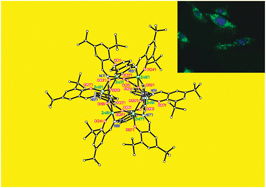Cellular uptake studies of two hexanuclear, carboxylate bridged, zinc ring structures using fluorescence microscopy†
Abstract
Two hexanuclear zinc complexes have been structurally characterized, and evaluation against several cells showed selective toxicity. Cellular uptake revealed a non-specific process, resulting in accumulation within the cell cytoplasm.


 Please wait while we load your content...
Please wait while we load your content...